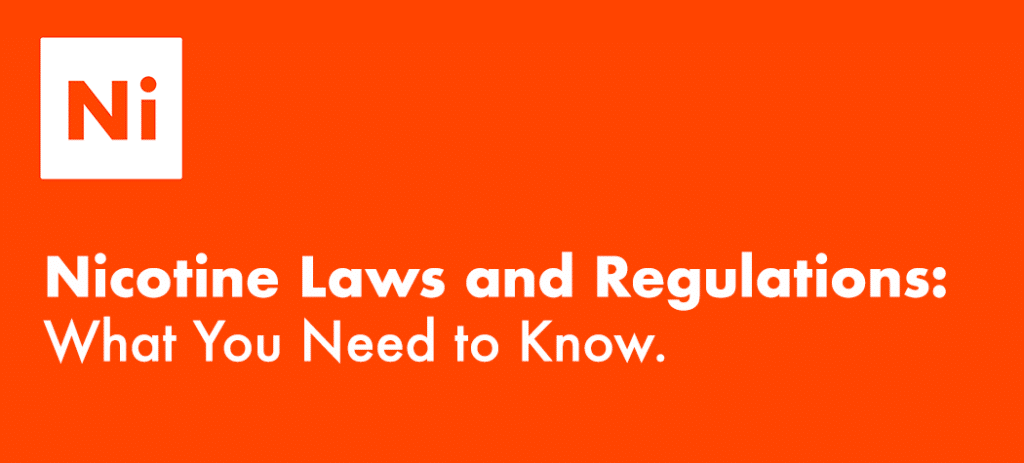Uncategorized
UK Nicotine Laws and Regulations
The landscape of nicotine product regulation is complex and ever-evolving, especially in the UK. With increasing popularity of nicotine products like vapes, understanding the legal framework surrounding these products is essential for both consumers and businesses. This article provides an in-depth look at the current laws and regulations governing nicotine products in the UK, including legal nicotine limits and compliance requirements.
Overview of UK Nicotine Regulations
In the UK, nicotine-containing products, especially electronic cigarettes (e-cigarettes) and vaping devices, are regulated under the Tobacco and Related Products Regulations 2016 (TRPR). These regulations are aligned with the European Union’s Tobacco Products Directive (TPD), which aims to ensure a high level of health protection for consumers.
Key Regulations for Nicotine Products
1. Legal Nicotine Limits
The TRPR sets specific limits on nicotine concentration and volume for e-liquids. The maximum nicotine concentration allowed is 20 mg/mL, and the maximum volume of e-liquid in a single refill container is 10ml. These limits are designed to reduce the risk of nicotine poisoning and ensure consumer safety.
2. Packaging and Labeling Requirements
All nicotine-containing products must adhere to strict packaging and labeling requirements. This includes child-resistant packaging, tamper-evident seals, and clear health warnings on the packaging. The label must display the nicotine content, ingredients, and relevant safety information to inform consumers.
3. Product Notification and Approval
Manufacturers and importers of nicotine-containing products must notify the Medicines and Healthcare products Regulatory Agency (MHRA) before placing their products on the market. The notification must include detailed information about the product’s ingredients, emissions, and toxicological data. Only products that comply with these requirements can be legally sold in the UK.
4. Advertising Restrictions
Advertising nicotine-containing products is heavily regulated to prevent misleading claims and protect public health. Television and radio advertisements for e-cigarettes and e-liquids are prohibited. Online advertising is allowed but must not target minors or make health claims without scientific evidence.
5. Age Restrictions
The sale of nicotine-containing products to individuals under the age of 18 is illegal. Retailers must verify the age of customers purchasing these products and implement measures to prevent underage sales. This includes age verification checks for online sales.
Compliance and Enforcement
Ensuring compliance with nicotine regulations is crucial for manufacturers, importers, and retailers. Non-compliance can result in significant penalties, including fines and product recalls. The MHRA is responsible for enforcing these regulations and conducting market surveillance to ensure that all products meet safety standards.
1. Inspections and Testing
The MHRA conducts regular inspections and testing of nicotine-containing products to verify compliance with legal requirements. This includes testing for nicotine content, emissions, and the presence of harmful substances. Products that fail to meet these standards may be removed from the market.
2. Reporting and Recalls
Manufacturers and importers must report any adverse effects or safety issues associated with their products to the MHRA. In cases where products pose a risk to public health, the MHRA can mandate a recall or issue safety warnings to consumers.
The Benefits of Proper Regulation
1. Consumer Safety
The primary goal of nicotine product regulation is to protect consumer health and safety. By setting limits on nicotine content and ensuring product quality, regulations help reduce the risk of nicotine poisoning and exposure to harmful substances.
2. Quality Assurance
Regulations ensure that nicotine-containing products meet stringent quality standards. This includes rigorous testing and adherence to manufacturing practices, which helps maintain product consistency and reliability for consumers.
3. Informed Decision-Making
Packaging and labeling requirements provide consumers with essential information about nicotine products. This transparency allows consumers to make informed choices based on the product’s ingredients, nicotine content, and potential health risks.
Conclusion
Understanding the laws and regulations surrounding nicotine products in the UK is crucial for both consumers and businesses. These regulations are designed to protect public health, ensure product safety, and provide transparency. Whether you are a manufacturer, retailer, or consumer, staying informed about the legal framework for nicotine products will help you navigate the market responsibly and safely.
For more information on nicotine regulations and related topics, visit our blog or contact us.
Disclaimer: This article is for informational purposes only and does not constitute legal advice. Consult a legal professional for personalized recommendations.


